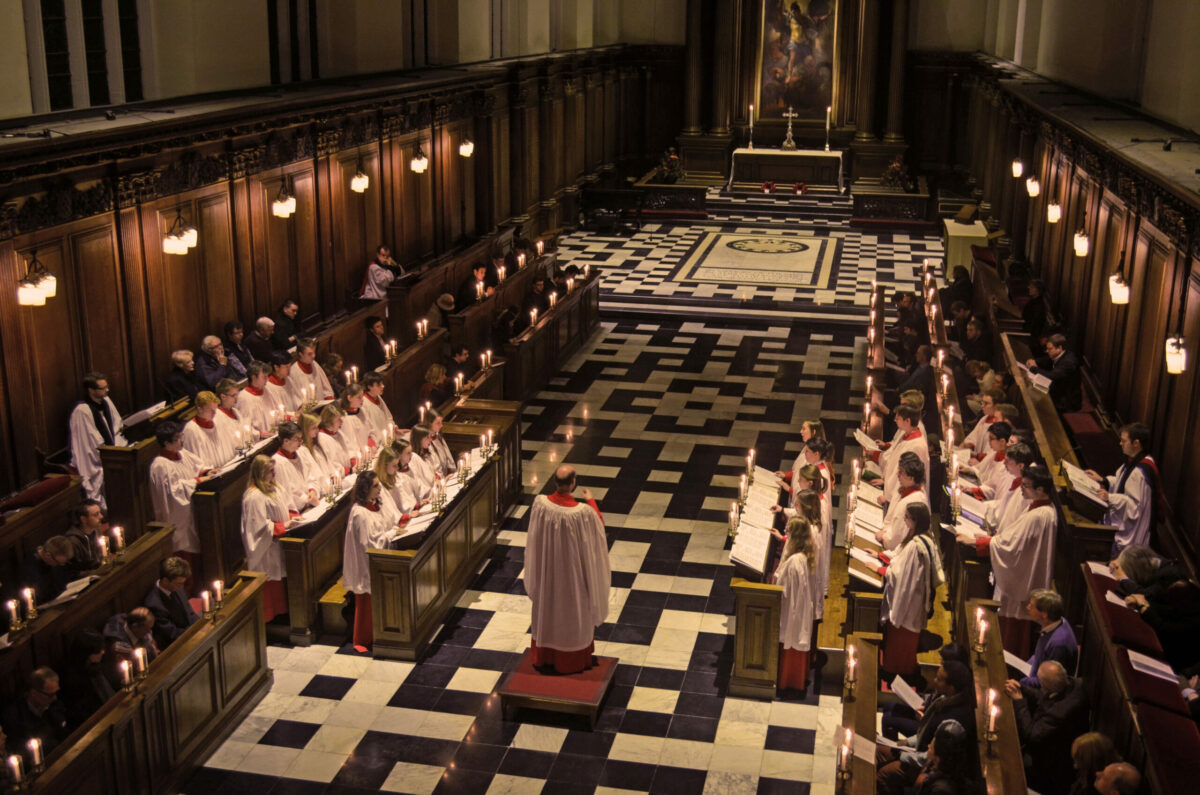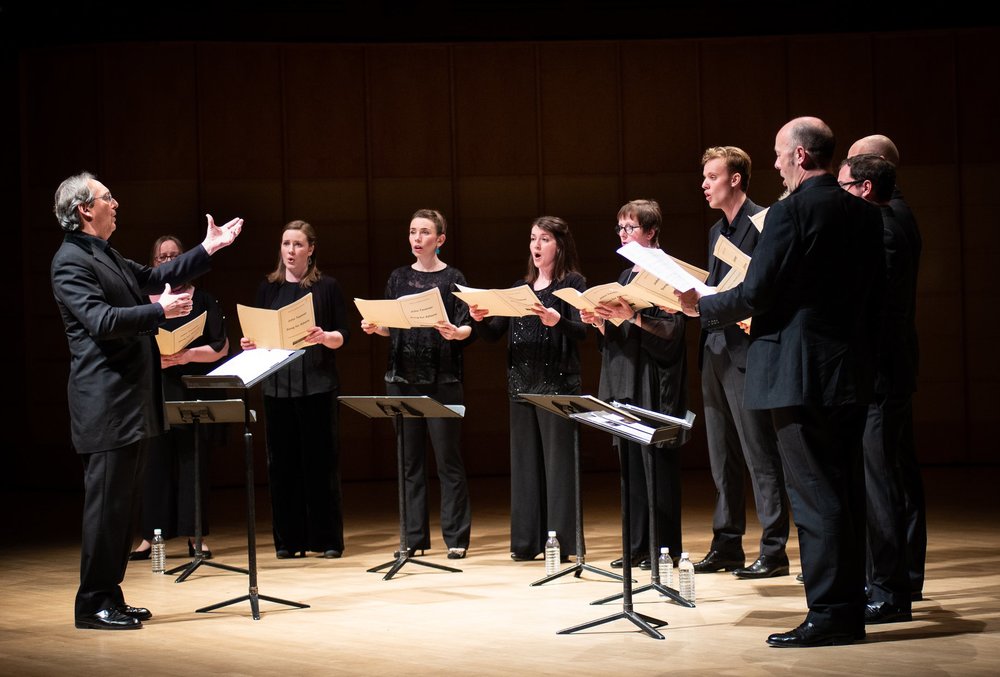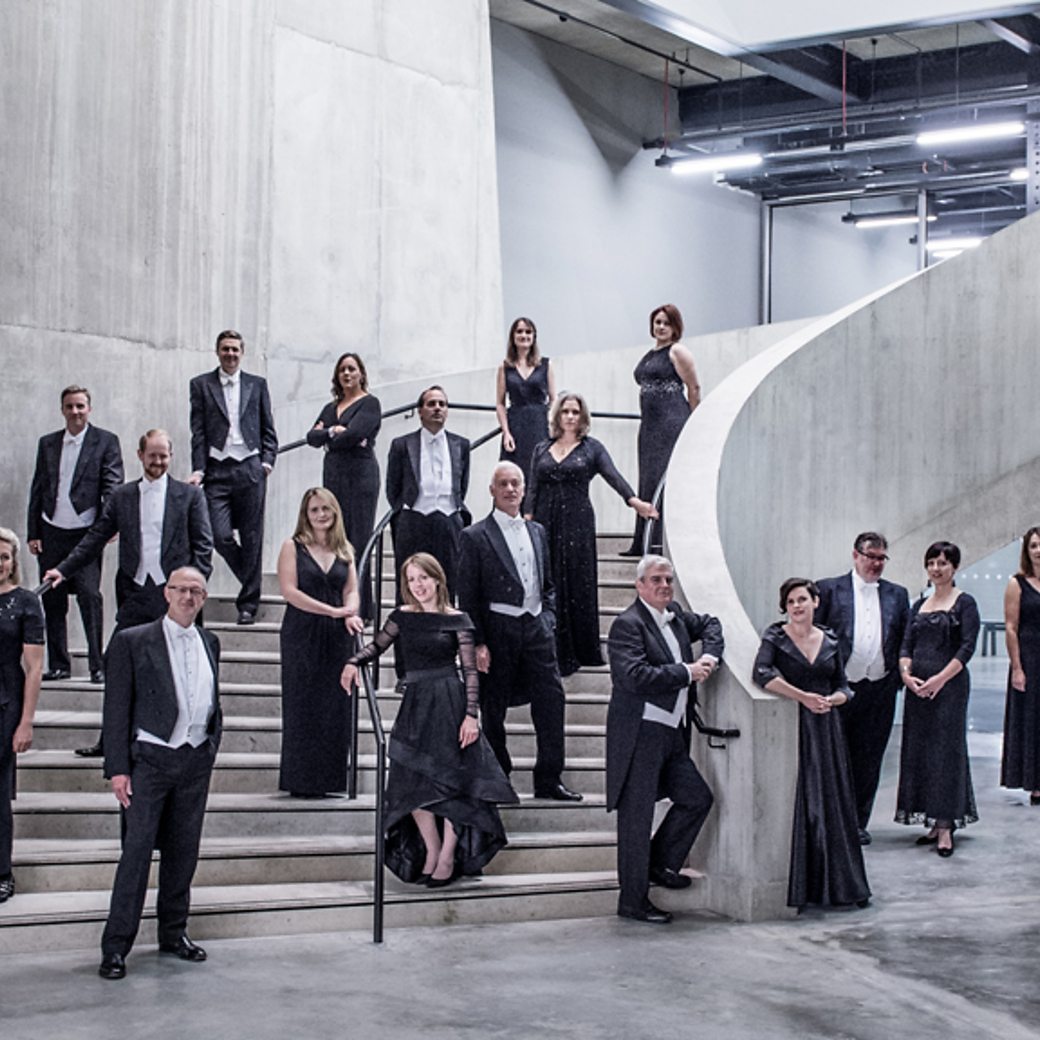by Christopher Lowrey
Published March 20, 2023
‘Our system is turning out mostly generalist singers. A good choir might be mix of choral specialists and step-out specialists to achieve different blends. Results may vary, which is a wonderful thing’

On social media recently, I’ve seen a lot of well-intentioned opining about the Anglican choral tradition being fundamentally misogynistic and perpetuating harmful vocal aesthetics, specifically by expecting women to sound like boys.
There is no denying the impact of historical misogyny in this and many other traditions, yet I’m leery of the easy seduction of such moral arguments.
Yes, the tradition has its roots in all-male choirs, but in recent years it has flourished and varied, admitting women, and has stretched to encompass everything from Voces8 to the choir of Trinity College, Cambridge and from the Tallis Scholars to the embattled BBC Singers.

To my mind, a lot of this negativity is rooted in real trauma experienced by singers at the hands of certain choir directors, those who mistake the superficialities of the English sound model for the whole of it. This applies to some in the U.S. and elsewhere who came up through the Anglican tradition from a distance, and also to some in the U.K. As a singer and conductor on both sides of the Atlantic, I’ve seen this firsthand.
There is a good deal more to excellent choral sound than singing straight or singing with vibrato. The sound can be dark or bright, loud or soft, mellow or metalloid. The shape of the vowels, the intensity and length of the consonants, the degree of legato, even the intake of breath all play a part. These elements interact dynamically and additively. The approaches will need to vary tremendously depending on the personnel, the repertoire, the acoustic, and the musical context: they can change moment to moment, phrase to phrase.

Historically, the shorthand way of achieving an “English sound”—used by a lot of keyboardists-cum-directors—has been to ask singers, usually sopranos, to “straighten that out,” which can often lead to physical tension, fatigue, burn out, and resentment. The word “straight” has been so overused and developed such a reputation that it fills many singers with indignation. And not without reason: focusing unrelentingly on “straightening” alone is not a holistic way of achieving a convincing choral sound.
That said, there is no getting around the fact that there is something inherent to controlling the degree of pitch oscillation (speed or width of vibrato) within the voice that has a palpable and undeniable effect on the overall intonation and blend of a group, especially as you travel higher up the natural overtone series. A fun trick to try: Once basses get below a low D they can basically sing just about any pedal pitch and it will more or less tune convincingly. (A less fun trick is to try this with the Allegri Miserere top C.) It means that the human ear, quite naturally, has a lower tolerance for pitch deviation in the higher voice parts.

There is also no denying the fact that there are physiological factors at play in producing disciplined and sophisticated choral sound, as indeed with any other kind of trained singing.
The Tenebrae Choir, led by Nigel Short, is one of many professional groups in the English choral tradition. In this Facebook clip, the choir is rehearsing Eric Whitacre’s well-known Sleep ahead of a concert in Seattle’s St. James Cathedral.
You’ll notice that the treble singers tend to be on the younger side (not always), and their voices are in general smaller and more supple. It doesn’t seem to cost them that much effort to control the pitch oscillation (quick and narrow vibrato) or amplitude for long periods of time. They might be able to easily float high and sustained lines without experiencing much vocal fatigue, or can recover from the fatigue quickly. They may even enjoy and refine their preternatural ability to do easily what many heavier or more mature voices find extremely difficult. It is worth saying that they will often be ill-suited to the demands of dramatic, solo repertoire.

That doesn’t make these choral specialists inherently inferior, nor does it mean that they have “bad habits.” What can be a bad habit for one type of voice can be another’s bread and butter. And these abilities can and often do change over the course of a career. Many singers slowly lose their ability to perform certain vocal feats as they age, and they may face difficulties transitioning away from an art form that gave them opportunities and a sense of identity.
Knowing that this is a common trajectory may not be enough to properly prepare a singer, and when the time comes it can be deeply painful and difficult to accept. It can also herald an exciting new chapter in the career of a singer, with opportunities opening up to them in different types of ensembles or styles of music.
Because many voices naturally evolve different abilities as they age (and lose some of those skills prized in choral singing), it might be tempting to imagine choral singing to be inherently more primitive or “unhealthy.” But elite choral singing, when done right, is anything but. The singers in a high-octane English-style choir are working like gangbusters to produce efficient and ultra-focused tone, especially in quiet singing. This, when coupled with an ample carpet of bass sonority, creates a buzzing wash of overtones that works sympathetically with each singer’s individual voice. I’ve performed in groups with and without this focus, and the difference on my own vocal stamina can’t be overstated. Singers in such choirs can rely on their colleagues to generate sonority whenever physically possible, freeing them from a self-imposed tendency to “sing for the section.” In short, it’s healthier singing.
Yet within most American groups, in my experience, this isn’t discussed much, if at all.
This broadly English aesthetic may or may not appeal. But I suspect, some feel threatened by it because they don’t fully understand it, haven’t experienced it in its best form, or perhaps are less physiologically set up to excel at it. Elite choral singing is not for everyone. Akin to Olympic athletes, only a few in the world can practice it at the pinnacle. Of course, it would be as misguided to uncompromisingly apply these same aesthetics to a community choir or church choir as it would be to coach a community swim team like Olympians.
That said, it can be good directorial practice in any setting to identify which singers excel naturally at these sometimes-freakish skills and to push them a bit to develop them, as well as nurture in them a sense of courage to use those skills unabashedly—another essential component of excellence. Identifying and recruiting choral specialists is another area in which the U.S. has so far been lacking, as the public conversation is often dominated by those advocating a one-size-fits-all approach to vocal pedagogy, where soloistic bel canto singing is held up as correct, and any other approach is wrong.

What’s more, most young classical singers in the U.S. are trained for careers as soloists on the opera stage and concert platform. Up until recently, it was not possible to eke out a career exclusively in professional choral singing (something that is quite common in the U.K.). The American scene, with fewer professional choral opportunities, is therefore blended with the oratorio circuit, comprised of artists who were trained as generalist singers—those who can have a go as an elite ensemble singer but who really thrive on solo or step-out work. Expecting these singers to behave exactly like choral specialists is unrealistic and unfair. Likewise, expecting ideal choral aesthetics to change to fit within generalist techniques is equally unrealistic and unfair. A good choir might consist of a mix of choral specialists and step-out specialists to achieve different blends. Results may vary, which is a wonderful thing.
Whatever your way into this fascinating and centuries-old tradition, relying on simplistic stereotypes or thread-worn narratives stifles learning and stifles artistic potential. Experience has taught me that the best advice to aspiring musicians is to get curious and stay curious. Why does that particular sound work? Listen, listen, listen, never stop listening. Face hard truths. Experiment. There are so many different approaches to making choral music, in some ways more today than ever. There’s no need to sacrifice one at the altar of another. Through more sustained conversation, and by saying the quiet bits out loud, we might come to a place of better understanding and acceptance about the complexities and challenges unique to choral singing, all without resorting to quick fixes or scapegoats. As anyone who loves and studies this art form will tell you, it’s rarely that simple.
Countertenor Christopher Lowrey has worked on many of the world’s leading stages. He is the founder and artistic director of the chamber choir Ensemble Altera.
Read Letters to the Editor about this article here.

